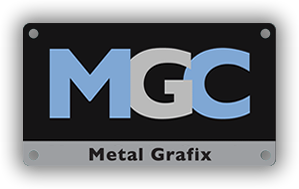Selecting the right plate
What You Need To Know:
Nameplates manufactured using different processes may look alike, but looks can be deceiving. Depending on your application, choosing the wrong process could have significant consequences, such as corrosion, peeling, fading or illegibility over time.
Before Ordering Nameplates From Anyone Ask These Critical Questions:
What Type Of Material Should I Use?
When a nameplate, placard or ID tag is attached to a dissimilar metal, the two metals react and corrosion can occur. Anodizing prevents this from happening, yet some nameplate manufacturers still use “utility grade aluminum” to compete on price. You need to know what environment your ID Tag will be subjected to, in order to determine the right type of material to use. Our technical department can help you choose the right nameplate for your application.
What If I Need Precision Plates Such As A Scale, Dial or Barcode?
For accuracy, those plates must be made using laser engraving or a photo etching process. Silk screening causes inaccuracies because the screen stretches as the ink is dragged across it. We recommend photo etching over laser engraving, because the result is virtually identical and the cost is significantly lower.
Should I Stamp Serial Numbers Or Engrave?
Engraving will lead to corrosion because it removes the protective anodized coating from the metal. This applies to laser engraving as well. Corrosion will occur in the area with the crucial information, resulting in loss of traceability. The stamping process does not remove any of the protective coating.
How Thick Should The Nameplate Be?
It depends on where it will be mounted and how the information will be applied to it. If you are stamping information on the nameplate we recommend a minimum thickness of .020 inches. Thinner materials are recommended for smaller plates or contoured surfaces and are attached using adhesive, while thicker materials are better suited for mechanical mounting such as riveting, screwing or strapping.
Is A Label Suitable For My Application?
If your application will not be used in a harsh environment and is not intended for traceability, then labels may be sufficient. Be aware however, that labels are simply not as durable as nameplates. The process to produce labels is the same as that used for nameplates. The only price advantage is the difference in the material cost. Although we can provide custom labels, you may not want to compromise durability, or your company’s image for the small savings you may gain.


